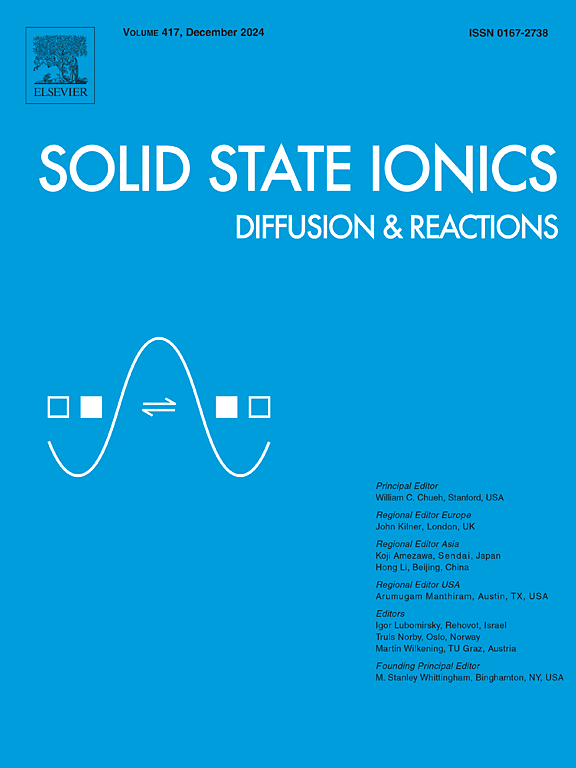Sulfur-doped graphene-decorated Li2FeSiO4@C nanocomposite: A novel cathode material for lithium energy storage
IF 3
4区 材料科学
Q3 CHEMISTRY, PHYSICAL
引用次数: 0
Abstract
Li2FeSiO4 has been regarded as a highly advanced cathode material for lithium energy storage because of its high theoretical capacity, good chemical stability and low cost. However, the low Li+ diffusion coefficient and poor electrical conductivity of pure Li2FeSiO4 result in bad rate capability and cyclic property. To address these problems, the designed sulfur-doped graphene-promoted Li2FeSiO4@C (abbreviated as SG-LFS@C) nanocomposite has been fabricated by a simple sol-gel technology and high-temperature solid-state reaction. Electrochemical tests demonstrate that the resulted SG-LFS@C displays superior lithium storage properties than Li2FeSiO4@C (abbreviated as LFS@C). The initial discharge capacities of SG-LFS@C were 260.7 and 139.1 mAh g−1 at 0.1 and 10C, respectively. Even after 400 cycles at 20C, the specific capacity of SG-LFS@C can still reach 116.5 mAh g−1 with the capacity retention rate of 94.9 %. The superior lithium storage performances for SG-LFS@C cathode are mainly attributed to the designed conductive nanostructures and the formed nanosized Li2FeSiO4 particles. Thus, this novel concept provides a new direction for further research on other lithium-ion batteries cathode materials.
求助全文
约1分钟内获得全文
求助全文
来源期刊

Solid State Ionics
物理-物理:凝聚态物理
CiteScore
6.10
自引率
3.10%
发文量
152
审稿时长
58 days
期刊介绍:
This interdisciplinary journal is devoted to the physics, chemistry and materials science of diffusion, mass transport, and reactivity of solids. The major part of each issue is devoted to articles on:
(i) physics and chemistry of defects in solids;
(ii) reactions in and on solids, e.g. intercalation, corrosion, oxidation, sintering;
(iii) ion transport measurements, mechanisms and theory;
(iv) solid state electrochemistry;
(v) ionically-electronically mixed conducting solids.
Related technological applications are also included, provided their characteristics are interpreted in terms of the basic solid state properties.
Review papers and relevant symposium proceedings are welcome.
 求助内容:
求助内容: 应助结果提醒方式:
应助结果提醒方式:


